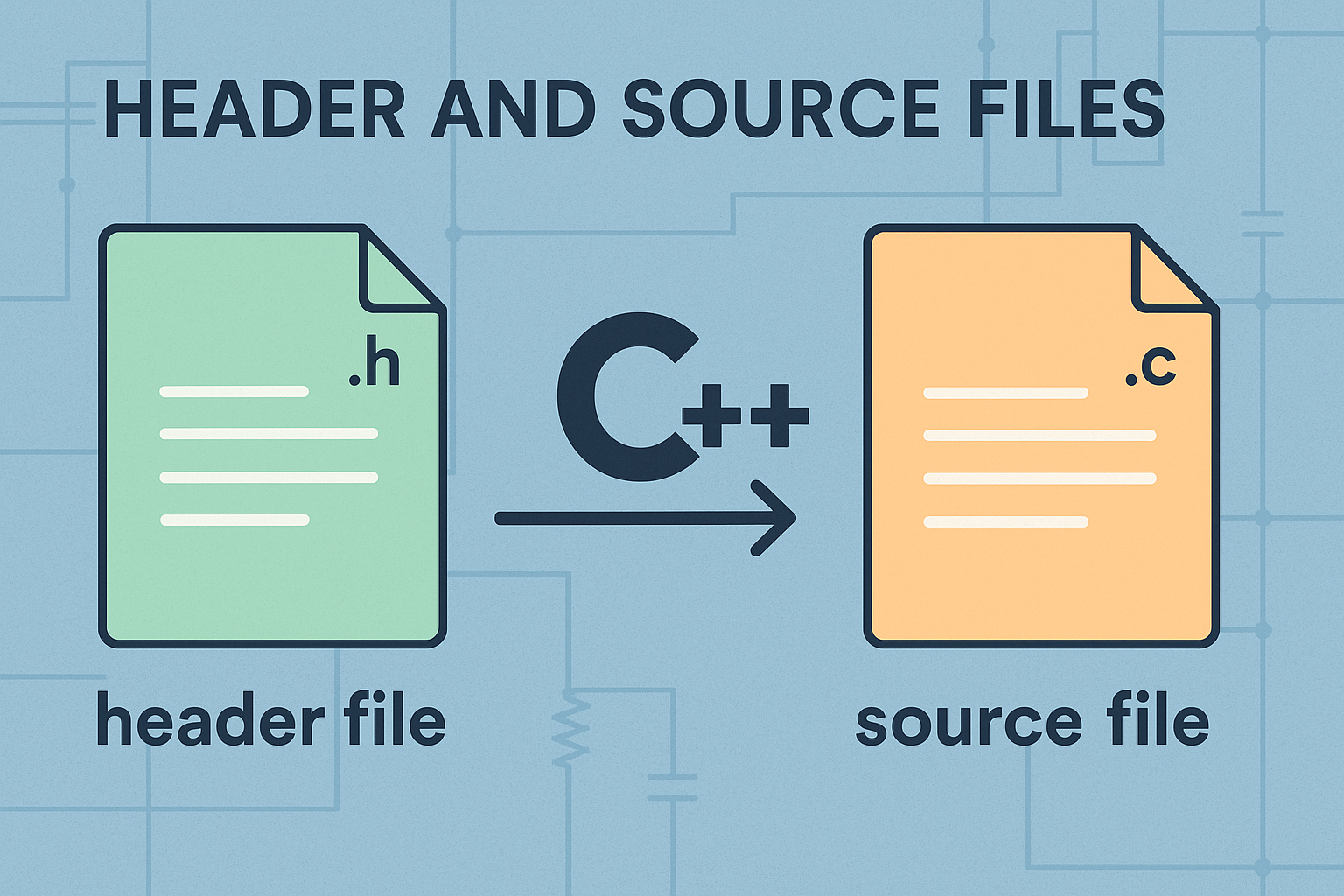
C and C++ may seem old-school, but their modular design philosophy still powers everything from embedded systems to operating systems. A key piece of that philosophy? The separation of header and source files.
At first glance, you might wonder: Why bother with splitting code into .h and .c/.cpp files? Why not just throw everything into one file and call it a day?
Turns out, this simple structure is the backbone of how C/C++ libraries are built, shared, and consumed. In this article, we’ll break down what header and source files are, why they matter, and how this separation makes development faster, cleaner, and more scalable.
The Basic Idea
When implementing a module or library in C/C++, the convention is:
- Header File (
.h): Defines the public interface of your module—function declarations,#defineconstants,struct,class, andenumdefinitions. - Source File (
.c/.cpp): Contains the actual implementation of those functions.
This structure keeps your interface and implementation cleanly separated. Think of the header file as a "contract" that describes what your module does, and the source file as the behind-the-scenes code that fulfills that contract.
Why Split Header and Source?
This pattern isn't just academic—it's practical. Here’s why:
1. Encapsulation and Abstraction
Users of your module only need to know what functions are available—not how they’re implemented. This reduces complexity and makes your code easier to maintain.
2. Faster Compilation
Compiling everything from scratch every time? No thanks. By pre-compiling source files into object files (.o) or shared libraries (.so, .dll), you save time:
- Only changed files are recompiled.
- Headers remain lightweight.
- No need to ship full source code—just headers and compiled binaries.
3. Reusability and Modularity
Once you've built a clean header/source pair, your module can be reused in any number of projects. You can even share it as a closed-source binary with a public interface—just like real-world libraries.
📦 Distributing and Using a Library
When packaging a C/C++ library, you typically provide:
- Header files (
.h) – the function declarations and type definitions. - Compiled binaries (
.so,.dll,.a) – the implementation.
Using It
To use the library in your own project:
- Include the header in your code:
#include <myCoolLibrary.h>
2. **Link the compiled binary** during compilation:
```bash
gcc myProgram.c -lmyCoolLibrary
You might also need to specify include (-I) and library (-L) paths if they’re not in standard locations.
Where Are These Files?
Most systems follow this pattern:
| File Type | Typical Location |
|---|---|
| Header files | /usr/include/ |
| Shared libraries | /usr/lib/, /usr/lib64/ |
Package managers like apt, dnf, and brew automatically install libraries to these locations so compilers can find them without extra flags.
Summary Table
Here’s a quick rundown of the file types:
| File Type | Extension | Purpose |
|---|---|---|
| Header File | .h | Declares interfaces |
| Source File | .c, .cpp | Implements logic |
| Object File | .o | Compiled code for linking |
| Shared Library | .so, .dll | Dynamically linked binary |
| Static Library | .a, .lib | Statically linked binary |
Final Thoughts
Header and source file separation is a fundamental part of C/C++ development. It keeps code modular, reusable, and fast to compile. The next time you're writing a utility, building a library, or distributing a tool, structure it like the pros do:
- Headers for the contract.
- Source for the implementation.
- Binaries for speed and reuse.
C it clearly now? 😉